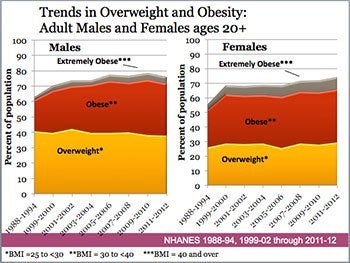February 27, 2015 — What should we eat to be healthy—and to stay that way?
More fruits and vegetables. Less red and processed meat. Whole grains instead of refined. Nonfat dairy foods, legumes, nuts, and seafood. Fewer foods with added sugars or high levels of saturated fat and sodium.
And foods with cholesterol, like eggs—long seen as unhealthy—are now considered OK. That’s because recent research shows only a weak link between cholesterol in the diet and blood cholesterol, and moderate egg consumption—up to one egg a day—is not associated with heart disease among healthy people.
These are some of the main recommendations from the 2015 Dietary Guidelines Advisory Committee (DGAC), which last week issued a report on how food, nutrition, and physical activity can promote the health of the U.S. population.
Many of the DGAC committee members came together, both in-person and via a live webcast, at a February 25, 2015 symposium at Harvard T.H. Chan School of Public Health. Presenters included Harvard Chan’s Frank Hu, professor of nutrition and epidemiology, and committee chair Barbara Millen, former professor at the Boston University School of Medicine and now president of public health startup Millennium Prevention. The event, held at Kresge’s Snyder Auditorium, also drew hundreds of online viewers.
Watch a webcast of the symposium
Although the new dietary guidelines aren’t official—they are sent to the U.S. Department of Health and Human Services (HHS) and the Department of Agriculture for review—those two agencies typically adhere closely to the DGAC’s recommendations when they issue Dietary Guidelines for Americans, which are updated and published every five years. The 2015 edition will be released later this year. The guidelines play a large role in the diets of millions of people; for instance, they help shape federally funded school lunch programs and national food assistance programs.
Unfortunately, too many Americans have diets and lifestyles that fall far short of current recommendations and that are linked to serious health issues such as cardiovascular disease, high blood pressure, type 2 diabetes, some cancers, and overweight and obesity, according to Millen.
“This is an actionable report,” said Millen. “The potential is enormous. We really hope our recommendations… stimulate thinking, conversation, and hopefully action.”
The committee drew on vast amounts of scientific evidence, such as peer-reviewed literature—including both randomized clinical trials and large cohort studies such as those conducted at Harvard Chan—national nutrition and health data monitoring systems, and more. They examined the current state of the American diet; how diet and lifestyle impact health; how best to improve diet and physical activity; and how to promote a healthy, safe, affordable, and sustainable food supply. They also looked at diet- and lifestyle-related health disparities and food insecurity in certain populations.
Wide-ranging recommendations

At the February 25th symposium, committee members took turns outlining sections of the report. They shared some key insights, including:
- Half of all Americans—117 million people—have one or more preventable chronic diseases and about two-thirds of U.S. adults—nearly 155 million—are overweight or obese.
- People should focus less on individual foods and more on overall diet patterns—such as the Mediterranean diet, rich in fish, nuts, and olive and vegetable oils, or vegetarian diets—that can confer health benefits.
- It’s important for individuals to try to change their behaviors—to eat healthier diets and to get more physical activity. It’s also important for policymakers to help alleviate food insecurity, help create healthier food environments, and take other steps to promote healthy eating and physical activity.
- Schools and worksites can play a big role in promoting healthy eating.
- Plant-based diets are not only better for health, they’re better for the planet. The current U.S. diet, high in animal-based foods, leads to increased greenhouse gas emissions and land, water, and energy use.
- Less than 10% of the U.S. population is physically active. Ideally, kids should get 60 minutes or more of activity each day, and adults should get 150 minutes over the course of a week.
The event was moderated by Harvard Chan’s Howard Koh, professor of the practice of public health leadership, who convened the 2015 DGAC during his 2009-14 tenure as assistant secretary for health for HHS. Keynoter for the event was J. Michael McGinnis, Executive Director of the Institute of Medicine Roundtable on Value & Science-Driven Health Care, who gave a historical overview of federal dietary guidelines and emphasized their importance. “The Dietary Guidelines for Americans should offer the anchor reference point around which all food and nutrition policies can orient,” he said.
Walter Willett, Fredrick John Stare Professor of Epidemiology and Nutrition and chair of Harvard Chan’s Department of Nutrition, commented on the new recommendations after the DGAC presentation. He questioned some of the findings on calcium, saying it’s not clear that Americans don’t get enough, as the guidelines suggested. But he also said that other recommendations—such as removing the cap on fat calories in the diet, and limiting red meat and added sugars—will lead to improved public health.
photo: Emily Cuccarese
